Dacia Duster vs Kia Stonic – Which model is better for everyday use?
Both models have their strengths – but which one suits you more?
Compare performance, efficiency, price and space directly: Dacia Duster or Kia Stonic?
Costs and Efficiency:
When it comes to price and running costs, the biggest differences usually appear. This is often where you see which car fits your budget better in the long run.
Dacia Duster has a noticeable advantage in terms of price – it starts at 16300 £, while the Kia Stonic costs 20100 £. That’s a price difference of around 3857 £.
Fuel consumption also shows a difference: Dacia Duster manages with 4.70 L and is therefore to a small extent more efficient than the Kia Stonic with 5.60 L. The difference is about 0.90 L per 100 km.
Engine and Performance:
Under the bonnet, it becomes clear which model is tuned for sportiness and which one takes the lead when you hit the accelerator.
When it comes to engine power, the Dacia Duster has a noticeable edge – offering 158 HP compared to 115 HP. That’s roughly 43 HP more horsepower.
In acceleration from 0 to 100 km/h, the Dacia Duster is somewhat quicker – completing the sprint in 9.40 s, while the Kia Stonic takes 10.70 s. That’s about 1.30 s faster.
In terms of top speed, the Kia Stonic performs minimal better – reaching 182 km/h, while the Dacia Duster tops out at 180 km/h. The difference is around 2 km/h.
There’s also a difference in torque: Dacia Duster pulls to a small extent stronger with 230 Nm compared to 200 Nm. That’s about 30 Nm difference.
Space and Everyday Use:
Cabin size, boot volume and payload all play a role in everyday practicality. Here, comfort and flexibility make the difference.
Both vehicles offer seating for 5 people.
In curb weight, Kia Stonic is a bit lighter – 1205 kg compared to 1377 kg. The difference is around 172 kg.
In terms of boot space, the Dacia Duster offers distinct more room – 517 L compared to 352 L. That’s a difference of about 165 L.
In maximum load capacity, the Dacia Duster performs distinct better – up to 1609 L, which is about 454 L more than the Kia Stonic.
When it comes to payload, Dacia Duster minimal takes the win – 453 kg compared to 445 kg. That’s a difference of about 8 kg.
Who wins the race?
The Dacia Duster proves to be outperforms in nearly all aspects and therefore becomes our DriveDuel Champion!
Dacia Duster is the better all-rounder in this comparison.
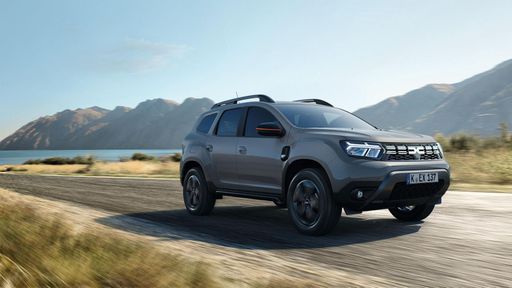 @ Dacia / Renault Group Media
@ Dacia / Renault Group Media
Dacia Duster
Dacia Duster
The Dacia Duster is a no-nonsense compact SUV that delivers rugged practicality and surprisingly comfortable everyday driving without fuss. It might not win any beauty contests, but its honest design, easy-to-live-with cabin and tough attitude make it a smart pick for buyers who want reliable transport without luxury frills.
details @ Dacia / Renault Group Media
@ Dacia / Renault Group Media
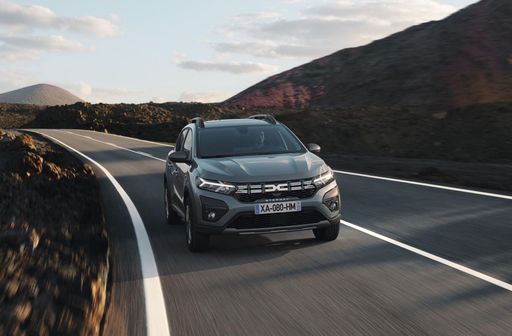 @ Dacia / Renault Group Media
@ Dacia / Renault Group Media
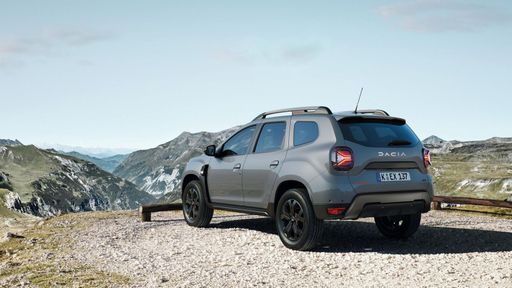 @ Dacia / Renault Group Media
@ Dacia / Renault Group Media
 @ Dacia / Renault Group Media
@ Dacia / Renault Group Media
Kia Stonic
The Kia Stonic is a sprightly compact crossover that mixes city-friendly agility with a cheeky, modern design — perfect for buyers who want style without sacrificing sense. Inside it serves up clever practicality and a bright, well-equipped cabin, making everyday driving feel a bit more fun than it has any right to be.
details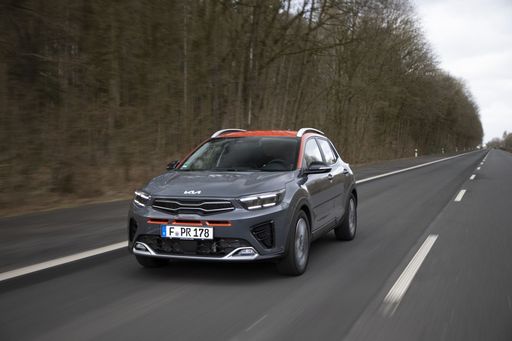 @ Kia Corporation
@ Kia Corporation
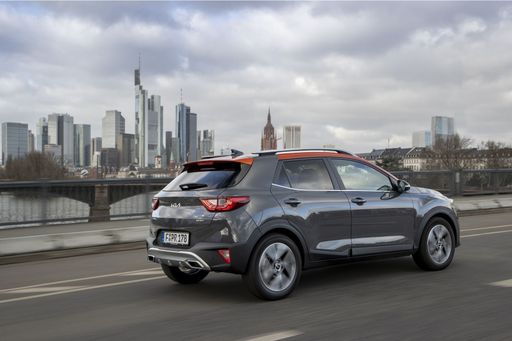 @ Kia Corporation
@ Kia Corporation
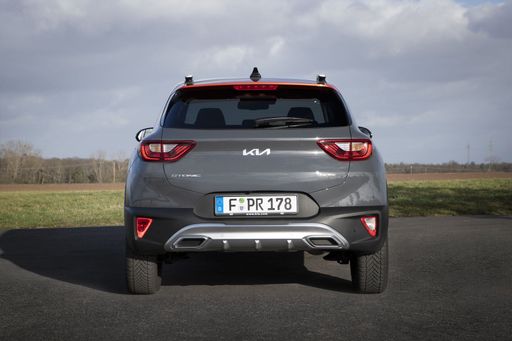 @ Kia Corporation
@ Kia Corporation
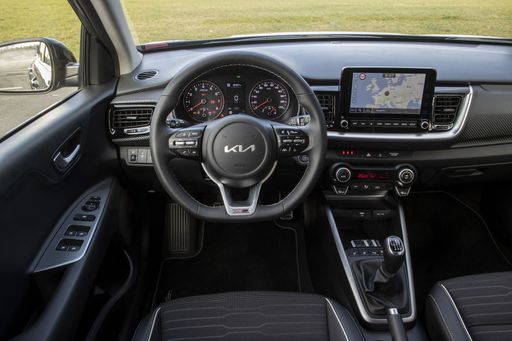 @ Kia Corporation
@ Kia Corporation
 @ Kia Corporation
@ Kia Corporation
 @ Dacia / Renault Group Media
@ Dacia / Renault Group Media
|
 @ Kia Corporation
@ Kia Corporation
|
|
|
|
Costs and Consumption |
|
|---|---|
|
Price
16300 - 24900 £
|
Price
20100 - 26600 £
|
|
Consumption L/100km
4.7 - 7.5 L
|
Consumption L/100km
5.6 - 5.9 L
|
|
Consumption kWh/100km
-
|
Consumption kWh/100km
-
|
|
Electric Range
-
|
Electric Range
-
|
|
Battery Capacity
0.60 kWh
|
Battery Capacity
-
|
|
co2
107 - 124 g/km
|
co2
127 - 133 g/km
|
|
Fuel tank capacity
50 L
|
Fuel tank capacity
45 L
|
Dimensions and Body |
|
|---|---|
|
Body Type
SUV
|
Body Type
SUV
|
|
Seats
5
|
Seats
5
|
|
Doors
5
|
Doors
5
|
|
Curb weight
1377 - 1455 kg
|
Curb weight
1205 - 1270 kg
|
|
Trunk capacity
348 - 517 L
|
Trunk capacity
352 L
|
|
Length
4343 mm
|
Length
4165 mm
|
|
Width
1813 mm
|
Width
1760 mm
|
|
Height
1656 - 1659 mm
|
Height
1520 mm
|
|
Max trunk capacity
1414 - 1609 L
|
Max trunk capacity
1155 L
|
|
Payload
450 - 453 kg
|
Payload
440 - 445 kg
|
Engine and Performance |
|
|---|---|
|
Engine Type
Petrol MHEV, Full Hybrid, LPG
|
Engine Type
Petrol, Petrol MHEV
|
|
Transmission
Manuel, Automatic
|
Transmission
Manuel, Automatic
|
|
Transmission Detail
Manual Gearbox, Automated Manual, Dual-Clutch Automatic
|
Transmission Detail
Manual Gearbox, Dual-Clutch Automatic
|
|
Drive Type
Front-Wheel Drive, All-Wheel Drive
|
Drive Type
Front-Wheel Drive
|
|
Power HP
115 - 158 HP
|
Power HP
100 - 115 HP
|
|
Acceleration 0-100km/h
9.4 - 11.6 s
|
Acceleration 0-100km/h
10.7 - 12.1 s
|
|
Max Speed
180 km/h
|
Max Speed
179 - 182 km/h
|
|
Torque
190 - 230 Nm
|
Torque
172 - 200 Nm
|
|
Number of Cylinders
3 - 4
|
Number of Cylinders
3
|
|
Power kW
84 - 116 kW
|
Power kW
74 - 85 kW
|
|
Engine capacity
1199 - 1789 cm3
|
Engine capacity
998 cm3
|
General |
|
|---|---|
|
Model Year
2025
|
Model Year
2025
|
|
CO2 Efficiency Class
D, C
|
CO2 Efficiency Class
D
|
|
Brand
Dacia
|
Brand
Kia
|
What drivetrain options does the Dacia Duster have?
The Dacia Duster is offered with Front-Wheel Drive or All-Wheel Drive.
The prices and data displayed are estimates based on German list prices and may vary by country. This information is not legally binding.
